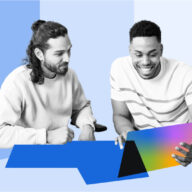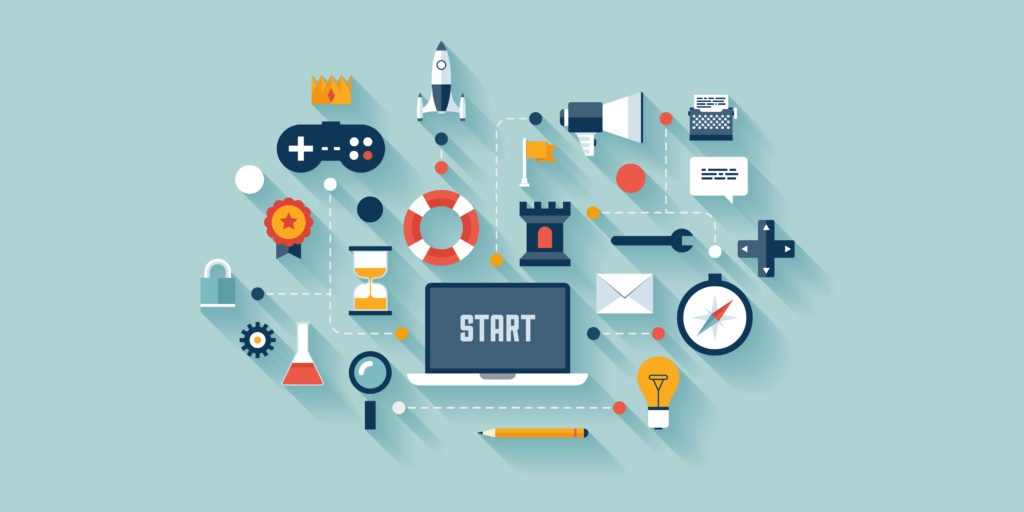
As a kid playing games, you didn’t stay up for hours because of the music, the graphics, or the storyline. Rather, it was because the games were so difficult that any kind of achievement was a massive deal for your 8-year-old self.
As an adult, these basic lessons still ring true: difficulty doesn’t put you off if it’s supplemented with rewards. No matter how difficult a task might be, you can get through it if you can manage it incrementally. Like Kimmy Schmidt says, “You can survive anything for 10 seconds. Then you just start on a new 10 seconds”.
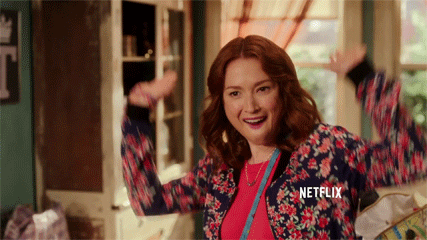
“Difficult” can mean mentally demanding, or even just arduous (as you’ve undoubtedly experienced after spending six hours on the same darn spreadsheet). Whichever meaning, difficulty can be offset by gamification because you’re wired to get motivated by challenges.
In fact, you probably already have tried to gamify your life, that is, you’ve made games out of boring activities to pass the time. Perhaps you try to best your own record time while cleaning up, or see if you can beat your previous commute time (while traveling at a safe and legal distance, of course).
How To Gamify Your Life
Gamification is turning a task into a game to motivate yourself to do it.
“We evolved to be satisfied by the world in different ways […] As intelligent beings, we’re enormously stimulated by problem solving and learning,” says Tom Chatfield in his explanation of gamification for TED. He breaks gamification down into a few key components:
- Indications of incremental progress (experience bars)
- Multiple long and short term aims (main quests and side quests)
- Rewards for effort (gold, loot, and experience)
- Rapid, frequent, and clear feedback (activity explained on screen — ‘level up!’)
- Uncertainty (rare loot and bonus gold)
- Other people (multiplayer online games)
When these factors come together and you are rewarded, achieve your goals and collaborate with other people, your brain releases dopamine, a chemical that motivates you.
It seems like a simple enough framework, one you may be intimately familiar with in a context of games you play in your free time. But in this case, who is the games master? How can you implement a system like this to gamify your life and get more done?
A great example of this phenomenon is demonstrated in the meteoric rise of the Pokemon Go app. Users have commented that the game gets them out of the house, if for no other reason than to catch more Pokemon out in the world.
In fact, users report they’re much more likely to run those errands they previously were procrastinating because there is a “reward” of more points in the game as a result of being out in a new place.
So, let’s say you’re low on milk. You don’t feel like venturing out, but you know you’ll regret it tomorrow morning when you make your coffee. This foresight alone does not motivate you. But if you’re playing Pokemon Go, however, there is an added bonus of catching Pokemon during your excursion.
Suddenly you’re much more motivated to get that errand done.
A gamification system where you control the rules
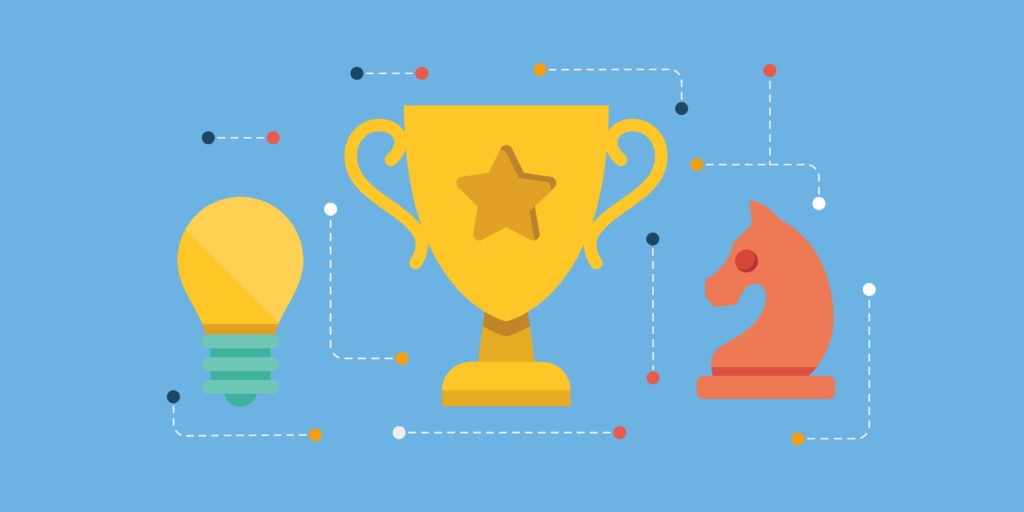
Despite its increasing popularity, not everyone is catching Pokemon, nor do they need to in order to get more done. The simplest, most low-tech way to start gamifying your work and getting more done is by attaching rewards to checklists.
Since ticking off a checklist item triggers the same dopamine release as achieving a game objective, it’s a great parallel, and you undoubtedly already use checklists to keep track of what you’ve done and need to do in the future.
Yu-kai Chou is a leading gamification expert and author of Actionable Gamification: Beyond Points, Badges, and Leaderboards. He recommends two methods for creating a rough gamification framework, based on parts of his octalysis framework.
THE MYSTERY BOX REWARD
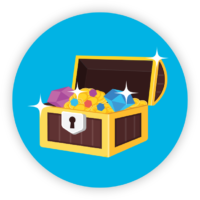 Part of the appeal of looting in traditional games like World of Warcraft or opening booster packs in the game Hearthstone is the element of surprise. Maybe you’ll get something good, maybe you won’t.
Part of the appeal of looting in traditional games like World of Warcraft or opening booster packs in the game Hearthstone is the element of surprise. Maybe you’ll get something good, maybe you won’t.
Chou advises pen-and-paper gamifiers to roll two dice when a task is checked off the list, and whatever the number on the dice shows, you give yourself the corresponding reward.
He says, “This is more engaging to the brain as every time you finish a task, it’s like pulling a slot machine bar. The excitement of the variable reward itself is enough to create anticipation.”
Rewards you can give yourself include an extra 15 minute break, a snack, or a walk around the block.
SOCIAL ACCOUNTABILITY: WILL YOU PUNISH YOUR BUDDY?
 Instead of rewarding yourself, how about playing on social accountability? Make a deal with one friend that you will help each other stay on task by texting your top 3 important tasks — tasks you want to accomplish by 9pm. At 9pm, send a second text updating them with anything that hasn’t been finished. For each unfinished task, your friend needs to do a predetermined punishment. For example, 30 push-ups.
Instead of rewarding yourself, how about playing on social accountability? Make a deal with one friend that you will help each other stay on task by texting your top 3 important tasks — tasks you want to accomplish by 9pm. At 9pm, send a second text updating them with anything that hasn’t been finished. For each unfinished task, your friend needs to do a predetermined punishment. For example, 30 push-ups.
As Chou explains, “This adds social accountability for getting things done. If you don’t get your stuff done, your friend gets punished for that.”
A gamification system where an app controls the rules
The DIY frameworks explained above are the most customizable, but for some people it could be too simple or open-ended to be a challenge. To fill that gap, there are a few gamification apps that get it right.
HABITICA

The first is Habitica. It turns your life into a role-playing game by applying all of the concepts discussed like currency, experience, and rewards.
It lets you set recurring tasks (Dailies), one off tasks (To-Dos) and optional tasks (Habits), then rewards you with gold to buy equipment, learn new skills, and cast spells. Overall, it turns your whole life into a role-playing game and is open ended so you can concentrate on the tasks you actually want to get done.
While they’re not full fledged games, there are plenty of great checklist apps with gamification elements that help motivate you to get your tasks done:
GetBadges adds gamification to developer tools like GitHub, and integrates with Trello to reward development teams when they reach their goals. Points are awarded for daily contributions, successful sprints and fixed bugs, then the progress is available to the whole team, so teams can congratulate each other on a job well done.
For those trying to become more mindful, the meditation app Headspace rewards the progress of users who have gone through streaks of meditation sessions:
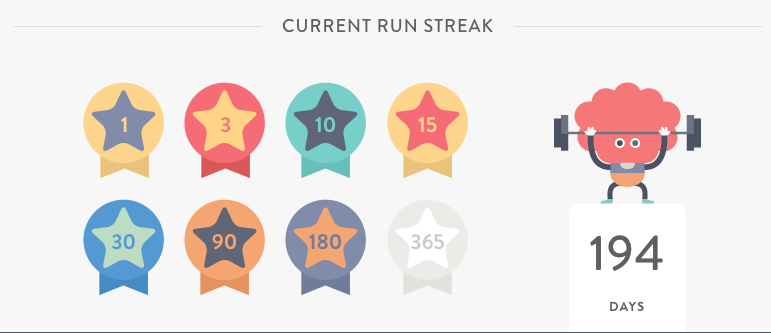
After receiving a certain number of badges, you also receive coupon codes via email.
Get tricked into doing things that are good for you
Gamification works by enhancing the reward of completing a task with something more tangible. Whether it’s allowing yourself personal rewards, or leveling up a digital character, anything is more tangible and rewarding when you gamify your life than just checking an item off a list.
And, after all, we’re just using our affinity for games to trick our brains into getting more done. Who says games are a waste of time?
{{cta(‘4e0d7e46-1775-4afd-92f6-7d79e287abf6’)}}





 )
) 











